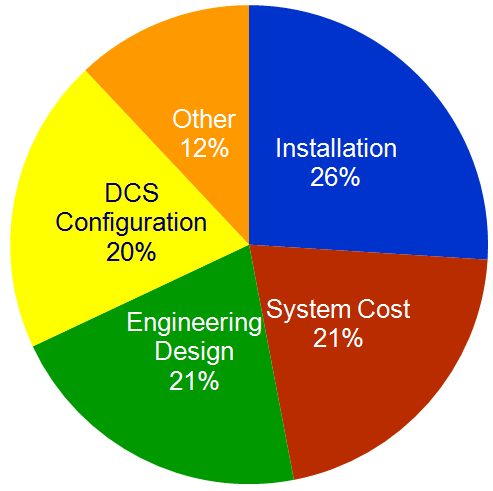Modernizing plant control systems is almost always a major undertaking. Emerson’s Laurie Ben will share her perspectives in ChemInnovations 2012 conference presentation, Forward or Reverse? Which Direction is Right for your Modernization Project? The ChemInnovations conference & exhibition will take place November 14 – 15, 2012 in New Orleans.
Laurie shared an advanced copy of her presentation and I’ll highlight some key points from it. She defines forward engineering as a:
Traditional process of moving from high-level abstractions and logical, implementation-independent designs to the physical implementation of a system.
Conversely, reverse engineering for a modernization project is defined as:
Process of studying or analyzing a system in order to learn details of design, construction, and operation, to produce a copy or perhaps an improved version.
A refining industry engineer highlighted the problem with a reverse engineering approach at the 2012 ARC Industry Forum:
The expectation is that vendors should convert only about 70% of the existing legacy control strategy. Any more than that and you aren’t taking advantage of the new system capabilities.
For example, a split-range duty control strategy may have been implemented in a legacy system using a velocity PID with incremental output and a long list of “expert rules” to adjust the control strategy over its operating range that may be hard to optimize and maintain. Looking forward at new technology, and using an embedded model predictive controller block could replace scores of difficult to maintain code, while optimizing performance over a vast range of process conditions, running closer to constraints, and provide operations an easier way to view the actual process performance as well as a future prediction of performance.
She shares three major phases in an automation modernization project—opportunity assessment, project execution, and ongoing lifecycle care. The greatest ability to influence the overall cost of the project through its lifecycle is in the opportunity assessment phase where the scope is defined, the process development is outlined, and the design is established. Once the project goes into implementation phase, cost expenditures go up rapidly and the ability to influence costs any further significantly decrease.
Laurie cites how the Total Installed & Commission Costs are typically distributed in a Modernization Project. These are based upon a database of executed studies and projects. Typical costs breakdowns are: Installation costs-26%, control system cost-21%, engineering design-21%, control system configuration-20%, and other-12%. Engineering and installation costs can exceed the hardware and software costs of the system. She emphasizes that the technology selection of the control system and associated components can have a significant impact on the engineering and installation costs.In the opportunity assessment, which is made up of two phases, APPRAISE and SELECT, a business analysis is performed and project objectives are established. This is done by undergoing a project scoping and site analysis step. Modernization studies should be performed to identify return on investment opportunities from employing modern automation technologies to improve throughput, reduce waste, improve quality, reduce unplanned downtime, etc. The business opportunity should/must be identified early as System obsolescence alone usually is not a sufficient business case to proceed with the project.
In the second part of opportunity assessment, the Select phase, the scope of the modernization project is established. Many steps are performed including a site audit lifecycle analysis, legacy system content analysis, solution feasibility and selection, risk mitigation strategy, installed cost estimate, and project execution contracting strategy. The results of these steps feed the project execution phase of the modernization project.
Laurie sums up her perspective by saying, the value of applying forward engineering thinking on Modernization project is to reclaim the proven parts of the legacy control system, remove the workarounds and unused strategies, and take advantage of the native capabilities in the modern control system. By starting with a solid business case and return on investment, the project team will have the organizational buy in to not only fund the project, but also work through the risks, costs, and unforeseen issues that come along with many of these projects.
If you’ll be in New Orleans for ChemInnovations 2012 this month, make sure to catch Laurie’s presentation.

